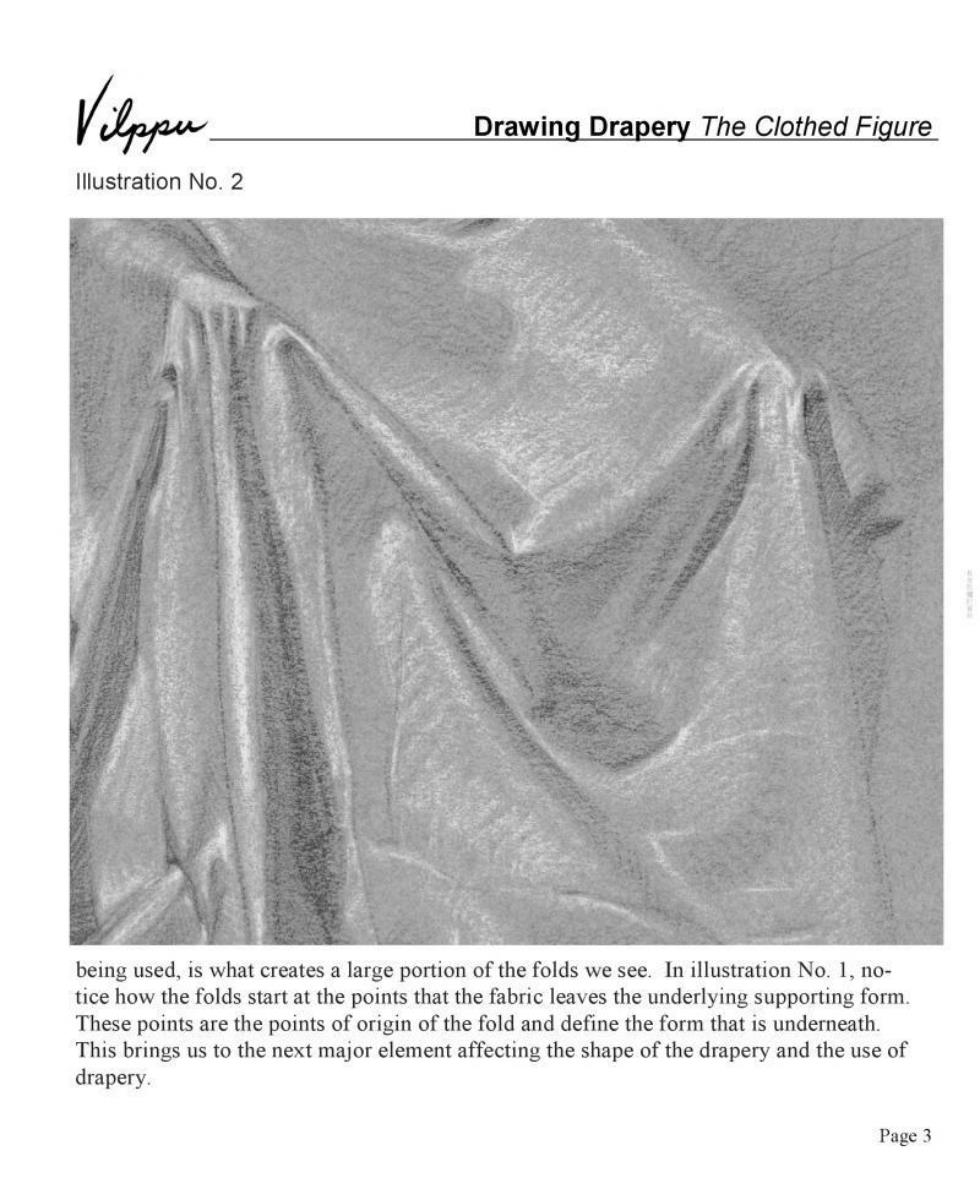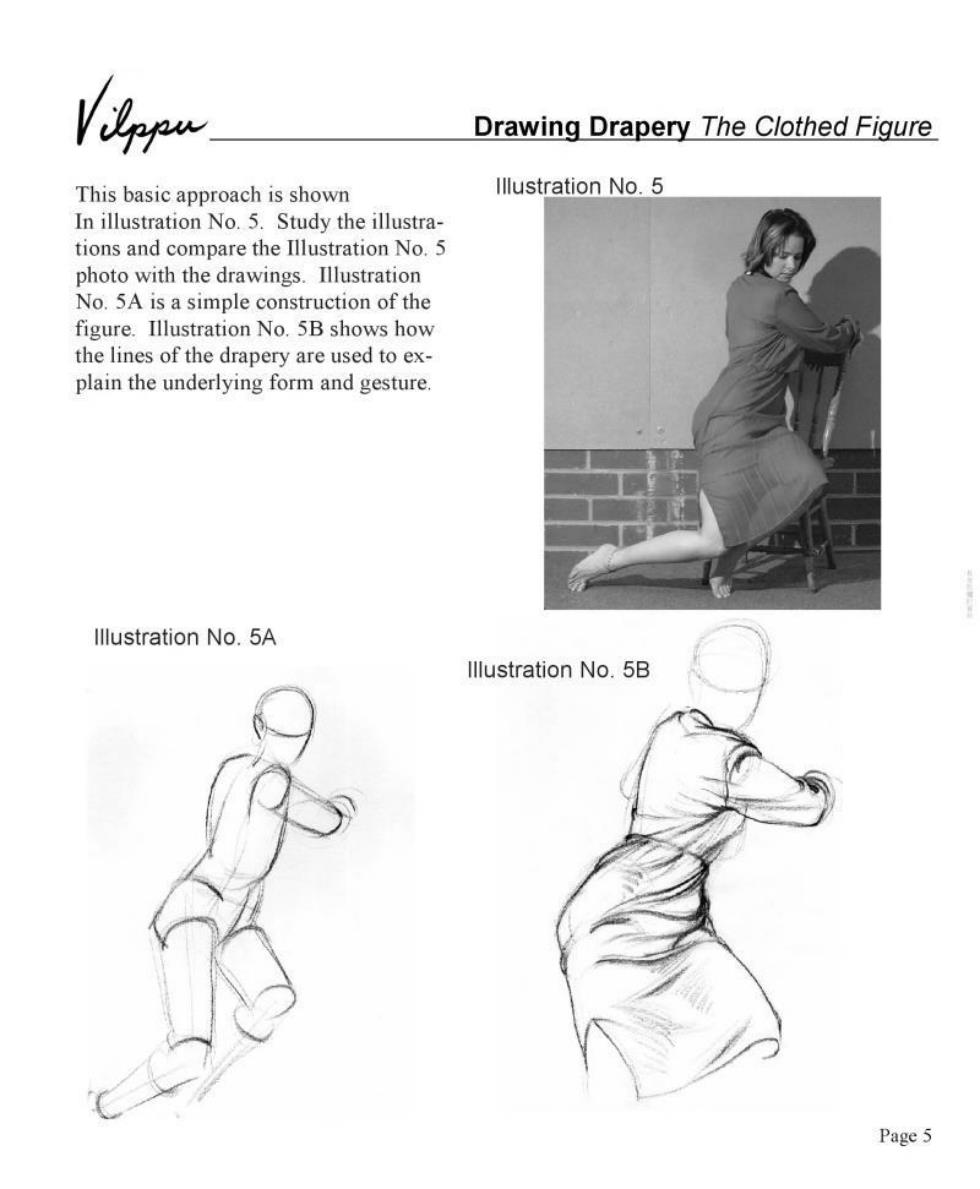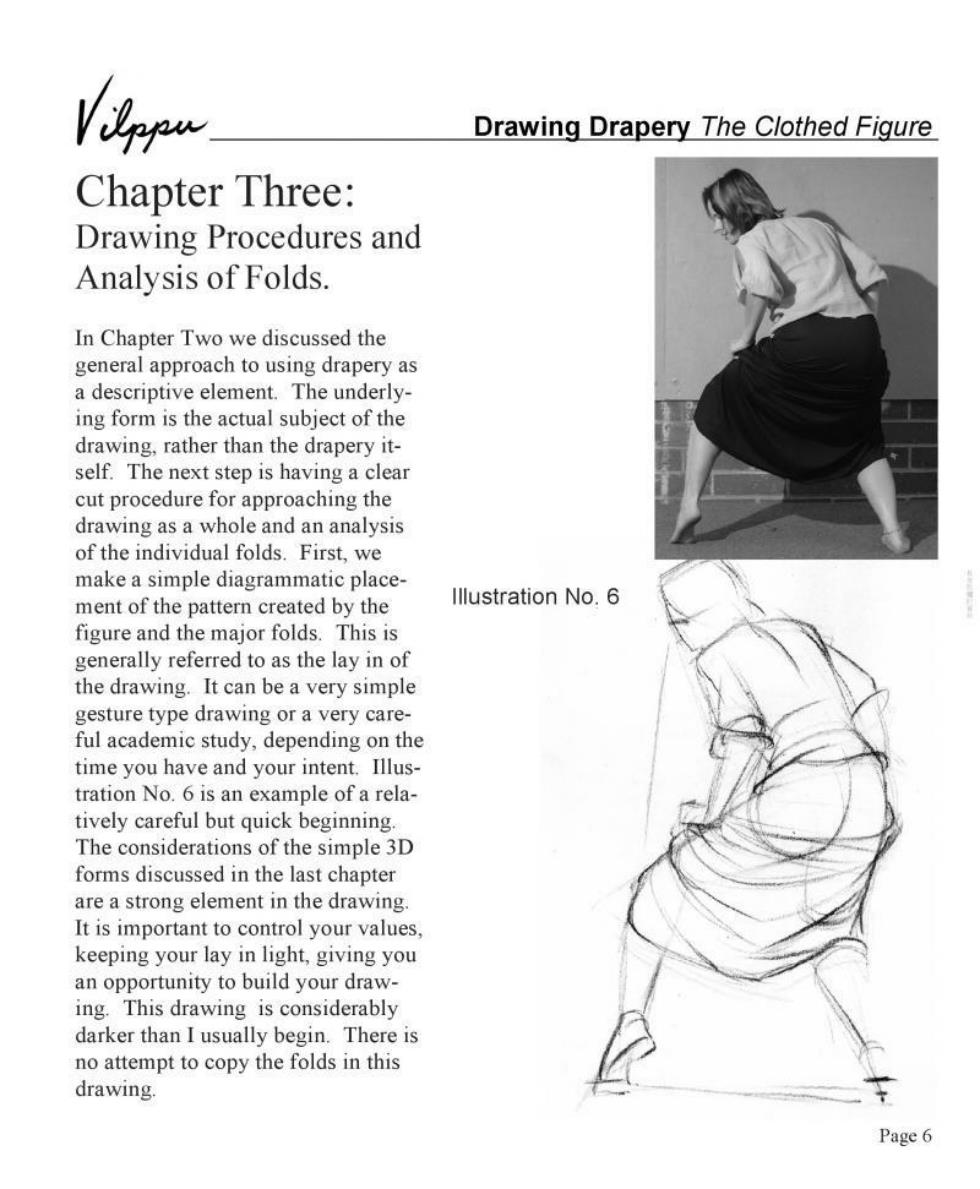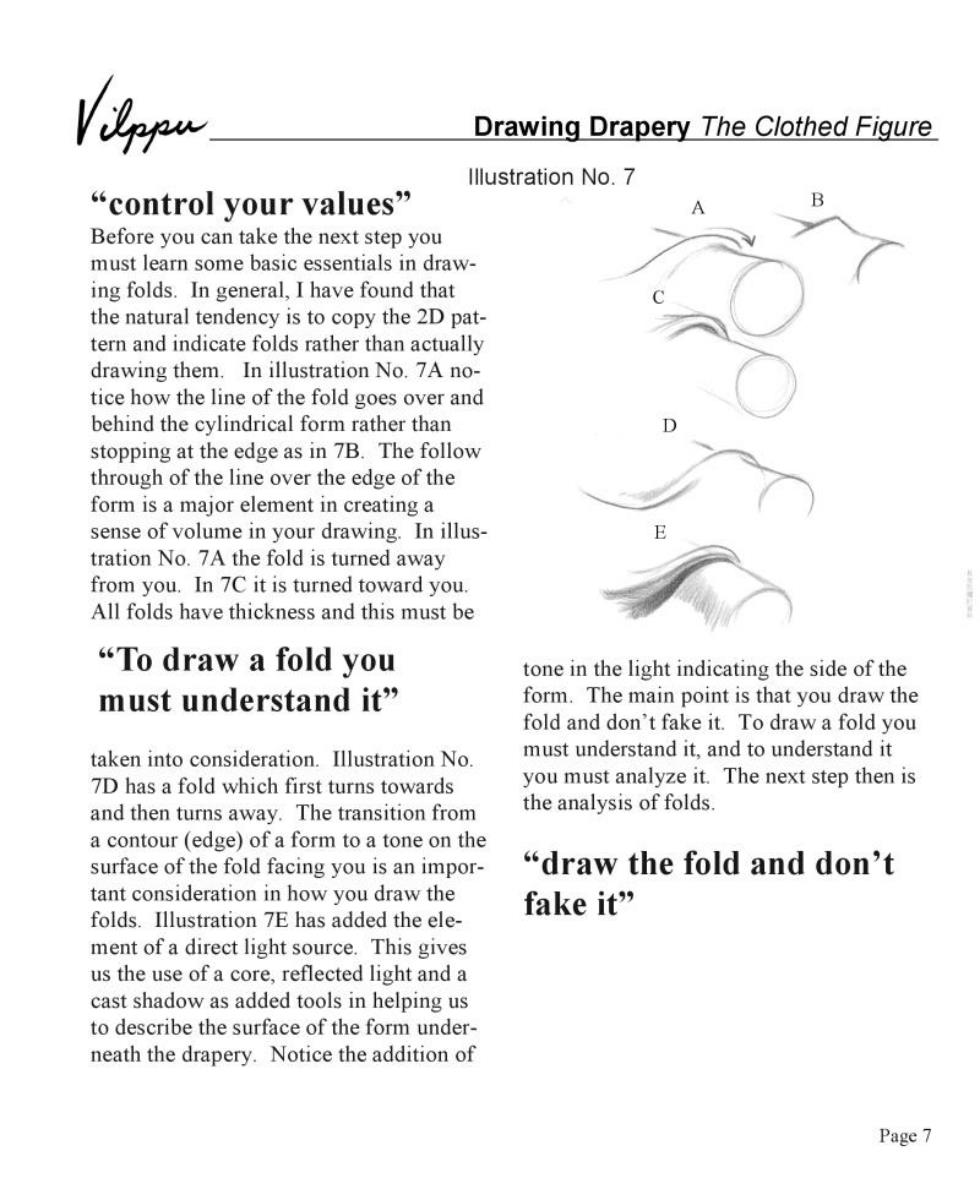
Virpw Drawing Drapery The Clothed Figure Illustration No.2 being used,is what creates a large portion of the folds we see.In illustration No.1,no- tice how the folds start at the points that the fabric leaves the underlying supporting form. These points are the points of origin of the fold and define the form that is underneath. This brings us to the next major element affecting the shape of the drapery and the use of drapery. Page 3

Drawing Drapery The Clothed Figure Chapter Two:Underlying Form One of the primary artistic uses of drapery is to define the form that is underneath it.The other is to modify the look of that form.In reality,we are not drawing drapery,but us- ing drapery to draw the figure.In Chapter One the main point was the way gravity de- termined the origin of the folds and how the origin defined the form underneath.You cannot use drapery to define the form if you do not understand the form underneath the drapery.Our first step in drawing the drap- ery is to clearly define the underlying form. In looking at Illustrations No.3 and 4 notice how the folds act as lines going over and around the underlying figure.In Illustration No.4,even though only the drapery has been drawn,you get a clear understanding of the underlying form.The first five chap- ters of my Drawing Manual are almost solely dedicated to using simple forms to lllustration No.3 create the figure.This is the fundamental approach to understanding the volume that we use the drapery to describe. Illustration No.4 Page 4

Drawing Drapery The Clothed Figure This basic approach is shown Illustration No.5 In illustration No.5.Study the illustra- tions and compare the Illustration No.5 photo with the drawings.Illustration No.5A is a simple construction of the figure.Illustration No.5B shows how the lines of the drapery are used to ex- plain the underlying form and gesture lllustration No.5A lllustration No.5B

Drawing Drapery The Clothed Figure Chapter Three: Drawing Procedures and Analysis of Folds. In Chapter Two we discussed the general approach to using drapery as a descriptive element.The underly- ing form is the actual subject of the drawing,rather than the drapery it- self.The next step is having a clear cut procedure for approaching the drawing as a whole and an analysis of the individual folds.First,we make a simple diagrammatic place- ment of the pattern created by the Illustration No.6 figure and the major folds.This is generally referred to as the lay in of the drawing.It can be a very simple gesture type drawing or a very care- ful academic study,depending on the time you have and your intent.Illus- tration No.6 is an example of a rela tively careful but quick beginning. The considerations of the simple 3D forms discussed in the last chapter are a strong element in the drawing It is important to control your values, keeping your lay in light,giving you an opportunity to build your draw- ing.This drawing is considerably darker than I usually begin.There is no attempt to copy the folds in this drawing. Page6

Drawing Drapery The Clothed Figure lllustration No.7 “control your values'” Before you can take the next step you must learn some basic essentials in draw. ing folds.In general,I have found that the natural tendency is to copy the 2D pat- tern and indicate folds rather than actually drawing them.In illustration No.7A no- tice how the line of the fold goes over and behind the cylindrical form rather than stopping at the edge as in 7B.The follow through of the line over the edge of the form is a major element in creating a sense of volume in your drawing.In illus- tration No.7A the fold is turned away from you.In 7C it is turned toward you. All folds have thickness and this must be “To draw a fold you tone in the light indicating the side of the must understand it" form.The main point is that you draw the fold and don't fake it.To draw a fold you taken into consideration.Illustration No must understand it,and to understand it 7D has a fold which first turns towards you must analyze it.The next step then is and then turns away.The transition from the analysis of folds. a contour (edge)of a form to a tone on the surface of the fold facing you is an impor- "draw the fold and don't tant consideration in how you draw the folds.Illustration 7E has added the ele- fake it'” ment of a direct light source.This gives us the use of a core,reflected light and a cast shadow as added tools in helping us to describe the surface of the form under- neath the drapery.Notice the addition of Page 7